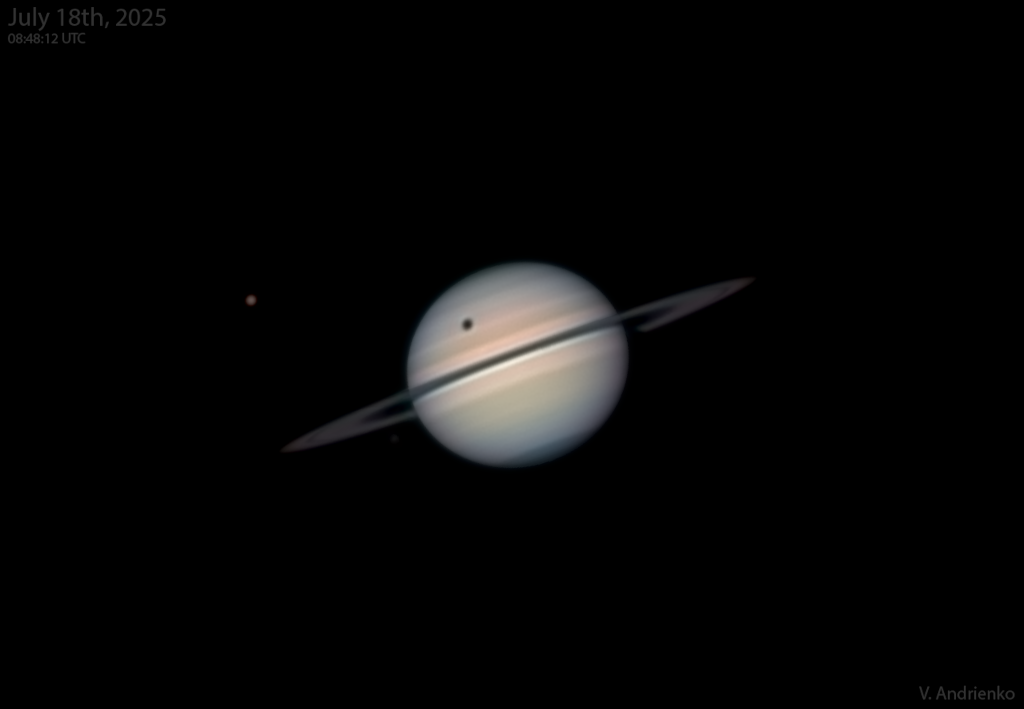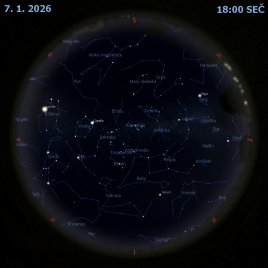Přechod stínu Titanu

Uznání a copyright: Volodymyr Andrienko
Přibližně každých 15 let jsou Saturnovy prstence nakloněny tak, že jsou vidět z boku. Jak se jasná, krásná soustava prstenců zužuje a slábne, stává se pro obyvatele planety Země stále hůře viditelnou. Poskytuje však možnost pozorovat přechody Saturnových měsíců a jejich temné stíny přes stále jasný disk prstenčitého plynného obra. Nejsnáze lze samozřejmě při přechodu spatřit největší Saturnův měsíc Titan. Na tomto teleskopickém snímku z 18. července je samotný Titan vlevo nahoře a vrhá kulatý tmavý stín na pásy Saturnových mraků nad úzkými prstenci. Sezóna přechodů stínu Titanu je nyní v plném proudu a každých 16 dní, což odpovídá oběžné době měsíce, dochází k přechodům jeho stínu. Poslední přechod jeho stínu nastane 6. října, ale bledý kotouček Titanu bude i nadále přecházet před Saturnem při pozorování dalekohledy ze Země každých 16 dní až do 25. ledna 2026.
Seznam odkazů v popisu
- APOD: 2009-03-19 Saturn: Přechody měsíců
- APOD: 2024-11-23 Meziplanetární Země
- NASA: Titan
- NASA: Webb’s Titan Forecast: Partly Cloudy With Occasional Methane Showers
- APOD: 2017-09-16 Závěrečný snímek z Cassini
- SkyAndTelescope.org: Titan Shadow Transit Season Underway
NASA Official: Phillip Newman Specific rights apply. NASA Web Privacy Policy and Important Notices
A service of: ASD at NASA / GSFC & Michigan Tech. U.
Odkaz na originální APOD


